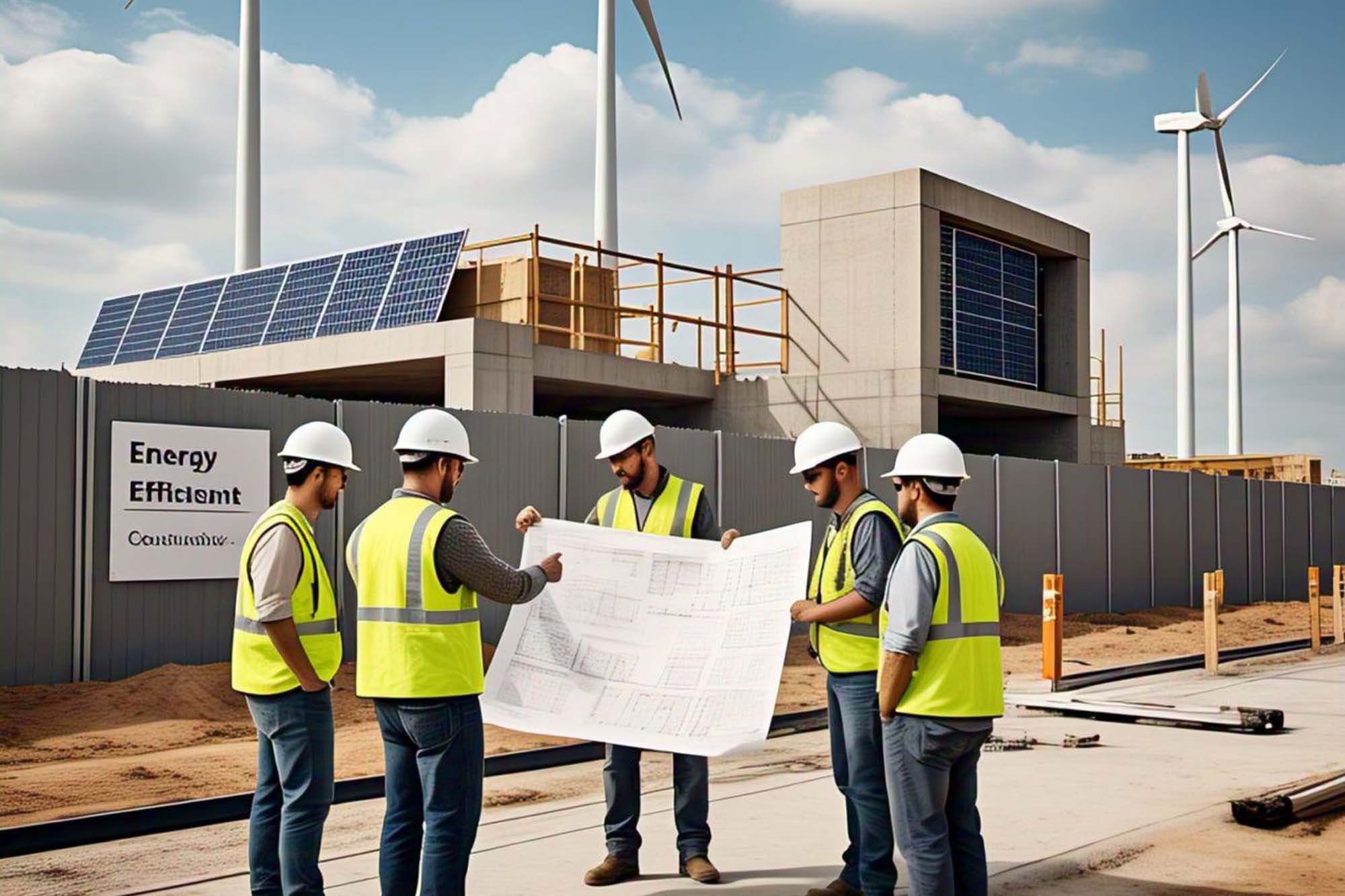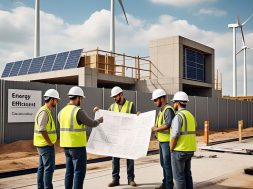Building energy efficiency

Let’s dive into the exciting world of building energy efficiency! How do you think recyclable materials, HVAC systems, and renewable energy integration make buildings more energy-efficient? Transitioning to high-performance HVAC systems is challenging, but collaboration between architects, engineers, HVAC experts, and building managers is key to overcoming it. Innovations like carbon-neutral manufacturing and tech solutions are helping us reach net-zero goals. What are your thoughts on these advancements?
With the construction industry significantly contributing to global energy consumption and CO2 emissions, adopting Net-Zero Energy Buildings is both innovative and imperative. The shift is crucial for minimising the impact on our environment and addressing the challenges of climate change. The approach to achieving net-zero buildings has to be multifaceted, with an integrated functioning of stakeholders for long-term benefits.
Challenges to adopting high-performance, sustainable HVAC systems
Sustainable HVAC systems are comparatively expensive and require a high initial establishment cost. This is because of the advanced technical requirements, quality components, and skilled labour requirements.
According to Ar. Shweta Deshmukh, Founder of Dezinebox, states that the technological integration of sustainable HVAC systems requires skilled technicians for installation and long-term maintenance. With limited access to sustainable materials in the market, installing systems requiring upgraded energy infrastructure may not be possible.
Lack of awareness, infrastructure constraints, regulatory and policy barriers, supply chain issues, and consumer preferences also dictate the adoption of high-performance HVAC systems, opines Ar. Priyanka Malik, Partner & Principal, Design Consortia. Policy barriers include inconsistent support and incentives in building codes that hinder the widespread adoption of sustainable HVAC technologies, and supply chain issues include scaling production and ensuring the availability of quality, cost-effective components, which are critical for widespread adoption, asserts Ar. Priyanka.
Energy efficiency through recyclable materials, HVAC systems, and renewable energy integration
Priyanka shares her views on integrating recyclable materials and renewable energy. Using recycled steel, aluminium, and reclaimed wood reduces embodied carbon, minimises waste, and enhances insulation, lowering energy demand. Similarly, heat pumps, energy recovery ventilators, smart controls, and low-GWP refrigerants optimise energy use and reduce environmental impact. Renewable energy sources include solar panels, wind turbines, and energy storage systems that enable buildings to generate and store clean energy. Net metering allows surplus energy to be fed back into the grid.
Carbon-neutral practices for net zero
Shweta illuminates the best practices for carbon-neutral manufacturing processes to achieve net zero. Important steps include using renewable energy and low-carbon or recycled raw materials or biodegradable resources wherever possible. Carbon-neutral processes are incomplete without digitisation. Using energy-efficient equipment and smart systems for monitoring and controlling energy use can enhance the performance of these processes.
Tech-enabled solutions for net zero
IoT sensors can reduce waste by optimising energy usage. Smart systems track emissions and energy performance, enabling better decision-making. AI-powered maintenance prevents inefficiencies and enhances equipment life. Smart automation reduces manual intervention, improving efficiency and accuracy. When using smart grids, systems adjust energy use based on grid demand and lower emissions.
Smart inverters, energy storage systems, and demand response strategies that enhance grid stability and maximise clean energy use can strengthen renewable energy integration. Similarly, smart EV charging and intelligent traffic management reduce emissions and grid strain. Predictive maintenance and analytics provide valuable insights for optimising energy consumption and tracking progress. Other methodologies include passive solar heating, proper material selection, and smart building management systems.
Waste reduction and circular economy integration for net zero
Shweta shares her insights into how circular economy integration is an efficient approach to achieving net zero. Reusing and recycling materials reduces the demand for energy-heavy raw material extraction. Circular design helps extend product lifespans, minimising the need for new production. Recycling consumes less energy than manufacturing new ones. Diverting waste from landfills cuts methane emissions and reduces energy consumption in waste processing. Recovering and reusing by-products helps conserve resources and lower emissions throughout the supply chain.
Priyanka shares her input on how smart technologies foster waste reduction. Smart waste management and supply chain technologies support a circular economy by reducing waste and promoting recycling. Lifecycle assessments, which involve continuous monitoring and improvement in energy use and waste management, ensure long-term efficiency.
The need for a collaborative approach
Designing truly energy-efficient HVAC systems requires a collaborative, integrated approach. By working together from the initial design phases to operation and maintenance, architects, structural engineers, HVAC experts, and building managers can ensure that the building and its systems are optimised to minimise energy consumption and environmental impact. Effective teamwork ensures optimal system sizing, energy performance, and occupant comfort while minimising costs and environmental impact. Lack of coordination can lead to inefficiencies, higher costs, and poor outcomes, leading to frequent breakdowns, maintenance requirements, and retrofitting.
Cookie Consent
We use cookies to personalize your experience. By continuing to visit this website you agree to our Terms & Conditions, Privacy Policy and Cookie Policy.










